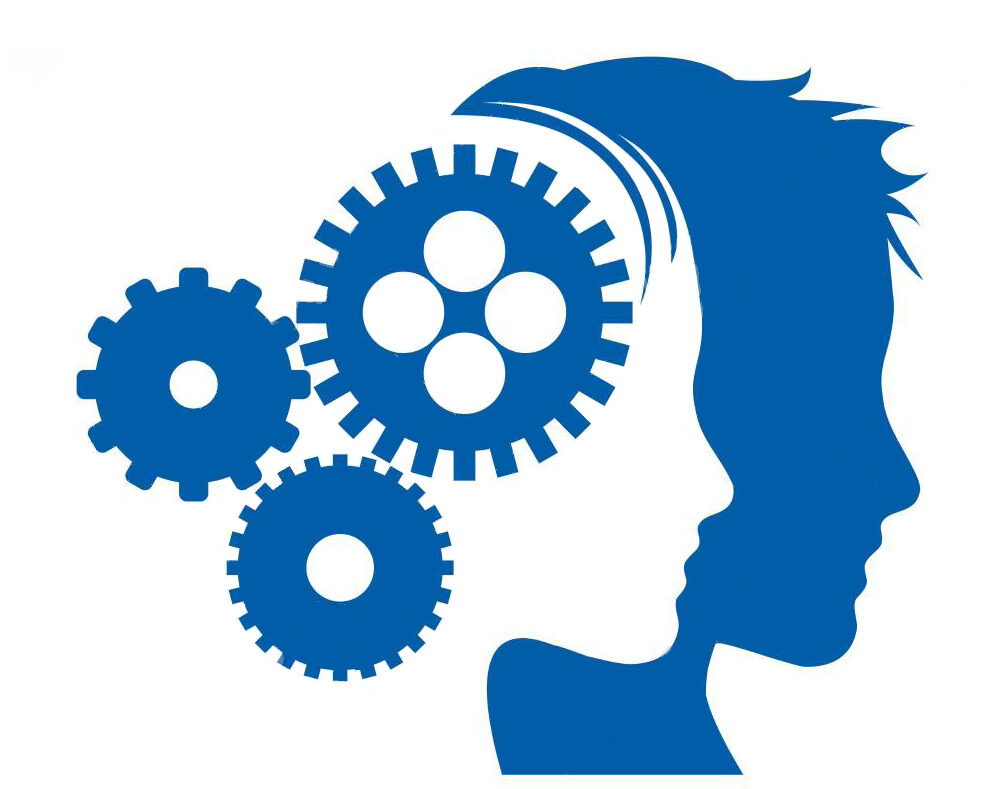Are you familiar with the concept of “Apego Evitativo”? This term, meaning “avoidant attachment” in English, refers to a specific attachment style characterized by a tendency to avoid closeness and emotional intimacy in relationships. In this article, we will delve into the characteristics and behaviors associated with Apego Evitativo, exploring its impact on individuals’ interactions and providing insights on how to navigate and understand this attachment style. So, if you’ve ever wondered why some people seem to shy away from emotional connection, keep reading to discover more about Apego Evitativo.

Understanding Apego Evitativo
Definition of Apego Evitativo
Apego Evitativo, also known as Avoidant Attachment, is a psychological term used to describe a particular style of attachment exhibited by individuals towards their primary caregivers. It is characterized by a tendency to avoid emotional closeness and a fear of dependence on others. People with Apego Evitativo often have a deep-seated mistrust of others and find it challenging to form and maintain intimate relationships. They may appear distant, disconnected, and dismissive of emotional and physical affection.
The Origins of Apego Evitativo
The roots of Apego Evitativo can be traced back to early childhood experiences and the quality of the caregiver-child relationship. Infants who experience inconsistent or neglectful parenting often develop avoidance strategies as a means of self-protection. When their needs for comfort and security are consistently unmet, they learn to suppress their attachment system and rely solely on themselves for emotional regulation. Over time, this coping mechanism becomes deeply ingrained, leading to the development of Apego Evitativo.
Signs and Symptoms of Apego Evitativo
Identifying Apego Evitativo in oneself or others can be challenging, as the signs and symptoms may vary from one individual to another. However, some common indicators include a strong desire for independence, difficulty in expressing emotions, discomfort with physical affection, a preference for solitude, emotional detachment, and having superficial relationships. Individuals with Apego Evitativo may also struggle with low self-esteem, fear of rejection, and difficulties in trusting others.
Impact of Apego Evitativo
Effect on Emotional Well-being
Apego Evitativo has a profound impact on an individual’s emotional well-being. The avoidance of emotional closeness and suppression of emotions can lead to a sense of loneliness, emptiness, and isolation. These individuals may struggle with regulating their emotions and have a limited repertoire for coping with stress and distress. As a result, they may experience higher levels of anxiety and depression, making it challenging for them to find happiness and fulfillment in their lives.
Impact on Relationships
The effects of Apego Evitativo extend beyond an individual’s emotional well-being and impact their relationships as well. People with Apego Evitativo often find it difficult to establish and maintain close and intimate connections with others. They may avoid commitment, struggle with intimacy, and have a fear of emotional vulnerability. These patterns of avoidance can lead to a cycle of failed relationships, underlying feelings of dissatisfaction, and challenges in forming deep and meaningful connections.
Long-Term Consequences
If left unaddressed, Apego Evitativo can have long-term consequences on an individual’s life. The difficulties in forming and maintaining relationships can lead to social isolation, a lack of support networks, and feelings of chronic loneliness. This can further exacerbate mental health issues such as anxiety and depression. Additionally, individuals with Apego Evitativo may find it challenging to seek help or support when needed due to their avoidance of emotional closeness, making it harder for them to break free from this pattern and live a fulfilling life.
Causes of Apego Evitativo
Early Neglect or Abuse
One of the primary causes of Apego Evitativo is early neglect or abuse during childhood. When infants and young children do not receive consistent and responsive care from their primary caregivers, they may develop a mistrust of others and learn to avoid seeking comfort or support. The experience of neglect or abuse can disrupt the development of secure attachment and instead foster a pattern of avoidance as a means of self-protection.
Overprotective Parenting
Surprisingly, overprotective parenting can also contribute to the development of Apego Evitativo. When parents are excessively controlling or intrusive, children may feel overwhelmed and deprived of the opportunity to develop a sense of autonomy and independence. This can lead to a subconscious aversion to intimacy and dependence on others, as individuals with Apego Evitativo have learned to navigate the world on their own from an early age.
Genetic Predisposition
While early life experiences play a significant role in the development of Apego Evitativo, there is evidence to suggest that genetic factors may also contribute to its manifestation. Some individuals may have an inherent predisposition towards avoidant attachment styles, making them more susceptible to developing Apego Evitativo even in the absence of adverse childhood experiences. Genetic factors can influence an individual’s temperament and emotional regulation, which in turn shape their attachment style.
Diagnosing Apego Evitativo
Assessment by Mental Health Professionals
Diagnosing Apego Evitativo typically requires the expertise of mental health professionals such as psychologists or psychiatrists. These professionals conduct thorough assessments and evaluations, taking into account an individual’s personal history and current symptoms. They may use standardized diagnostic tools, such as questionnaires and interviews, to gather information and determine the presence and severity of Apego Evitativo.
Observation of Attachment Behaviors
In addition to assessments, mental health professionals may also observe an individual’s attachment behaviors to further assess Apego Evitativo. This can involve observing interactions between the individual and their significant relationships, such as family members or romantic partners. By analyzing patterns of avoidance, emotional distancing, and resistance to intimacy, professionals can gain insights into an individual’s attachment style and make a more accurate diagnosis.

Treatment of Apego Evitativo
Attachment-Based Therapy
Attachment-based therapy is a widely used and effective treatment approach for individuals with Apego Evitativo. This therapy focuses on creating a safe and supportive therapeutic relationship where individuals can explore their attachment patterns, emotions, and fears. Through various techniques, such as guided imagery, role-playing, and exploration of early attachment experiences, individuals can gain insight, heal emotional wounds, and develop healthier patterns of attachment.
Cognitive Behavioral Therapy
Cognitive-behavioral therapy (CBT) can also be beneficial in treating Apego Evitativo. This type of therapy aims to help individuals identify and challenge their negative thoughts and beliefs about relationships and intimacy. By working on changing these cognitive patterns, individuals can develop more adaptive coping mechanisms, improve their self-esteem, and overcome avoidance behaviors. CBT also provides the opportunity to learn and practice new skills for forming and maintaining healthier relationships.
Family Therapy
Family therapy can be a valuable treatment option for individuals with Apego Evitativo, especially when the root causes are related to familial dynamics. In family therapy, the entire family system is involved in the therapeutic process, allowing for a deeper understanding of the relational patterns and dynamics that contribute to Apego Evitativo. By exploring and resolving underlying conflicts, improving communication, and fostering a secure and supportive environment, individuals can experience positive changes in their attachment style and overall well-being.
Supportive Interventions
Alongside formal therapies, supportive interventions can also play a crucial role in the treatment of Apego Evitativo. These can include support groups where individuals with similar experiences can share their struggles, provide validation, and offer support. Individual counseling can also be beneficial in providing a safe space for individuals to explore their emotions and develop coping strategies. Additionally, self-help strategies, such as mindfulness exercises, journaling, and self-care practices, can help individuals build resilience and strengthen their emotional well-being.
Prevention of Apego Evitativo
Promoting Secure Attachment
One of the most effective ways to prevent Apego Evitativo is to promote secure attachment from infancy onwards. This can be achieved by providing a nurturing and responsive environment for infants and young children. Caregivers should prioritize meeting their child’s emotional and physical needs, providing consistent love, support, and affection. By fostering a secure attachment, children develop a solid foundation for healthy relationships and emotional well-being.
Educating Parents
Educating parents about attachment styles and their impact on their child’s development is crucial in preventing Apego Evitativo. Parents should be made aware of the importance of responsive caregiving, emotional attunement, and creating a secure and loving environment. By recognizing and understanding their child’s emotional needs, parents can provide the necessary support and create a foundation for secure attachment.
Providing Early Intervention
Early intervention services can significantly reduce the risk of Apego Evitativo in children who may be at risk due to adverse early life experiences or genetic predisposition. These services may include parenting programs, home visits, and therapeutic interventions that aim to support both the child and their caregivers. By addressing attachment-related issues early on, professionals can help children develop healthy attachment patterns and mitigate the risk of developing Apego Evitativo.

Research on Apego Evitativo
Studies on Attachment Styles
Numerous studies have been conducted to understand the complexities of attachment styles, including Apego Evitativo. These studies have provided valuable insights into the prevalence, etiology, and consequences of Avoidant Attachment. They have helped researchers and professionals develop effective interventions and treatment approaches. Additionally, these studies have shed light on the impact of attachment styles on various aspects of individuals’ lives, from mental health to relationship satisfaction.
Longitudinal Research on Apego Evitativo
Longitudinal research on Apego Evitativo has contributed to our understanding of the long-term consequences and trajectories of this attachment style. These studies have followed individuals from childhood into adulthood, examining how Avoidant Attachment manifests in different stages of life. Longitudinal research has provided valuable information on the persistence and malleability of Apego Evitativo, helping professionals tailor interventions and support for individuals at different stages of their development.
Cultural Factors in Apego Evitativo
Cross-Cultural Differences in Attachment Styles
Research has shown that attachment styles, including Apego Evitativo, can vary across different cultures. Cultural norms, beliefs, and parenting practices influence the development and expression of attachment styles. For example, individualistic cultures may emphasize independence, leading to higher rates of Apego Evitativo. In contrast, collectivistic cultures may emphasize interdependence and connectedness, promoting more secure attachment patterns. Understanding these cultural factors is crucial in effectively addressing Apego Evitativo in diverse populations.
Influence of Cultural Beliefs and Practices
Cultural beliefs and practices also play a significant role in shaping attachment styles. For instance, cultural ideologies surrounding emotional expression, gender roles, and autonomy can impact the development of Apego Evitativo. Culturally-specific healing practices and interventions can be employed to address Apego Evitativo, taking into account the unique cultural context of individuals and communities. Recognizing and embracing cultural diversity is essential to provide inclusive and effective support for individuals with Apego Evitativo.

Support for Individuals with Apego Evitativo
Support Groups
Support groups can provide a valuable source of support and understanding for individuals with Apego Evitativo. Connecting with others who have similar experiences can help individuals feel less alone and provide an opportunity for sharing coping strategies and insights. Support groups, facilitated by trained professionals, create a safe and non-judgmental space for individuals to express their emotions, gain validation, and learn from others’ experiences.
Individual Counseling
Individual counseling with a mental health professional well-versed in attachment theory can be highly beneficial for individuals with Apego Evitativo. In a one-on-one setting, individuals can explore their attachment patterns, underlying emotions, and develop strategies to overcome avoidance behaviors. Individual counseling gives individuals the opportunity to work through their unique challenges and develop personalized coping mechanisms to improve their overall well-being.
Self-help Strategies
Self-help strategies can complement formal therapy and support individuals in managing Apego Evitativo. Techniques such as mindfulness, self-reflection, and journaling can help individuals become more aware of their thoughts, emotions, and attachment patterns. Engaging in activities that promote self-care, such as exercise, hobbies, and creative outlets, can also enhance emotional well-being and provide a sense of self-nurturing.
Conclusion
Understanding and addressing Apego Evitativo is essential for individuals who struggle with this attachment style. Recognizing the signs and symptoms, and the impact it can have on emotional well-being and relationships, is the first step towards seeking help and making positive changes. Through various therapeutic approaches, early intervention, and support systems, individuals with Apego Evitativo can cultivate healthier attachment patterns, improve their emotional well-being, and develop more fulfilling relationships. By promoting secure attachments, educating parents, and embracing cultural diversity, we can create a society that fosters optimal well-being for all individuals.








